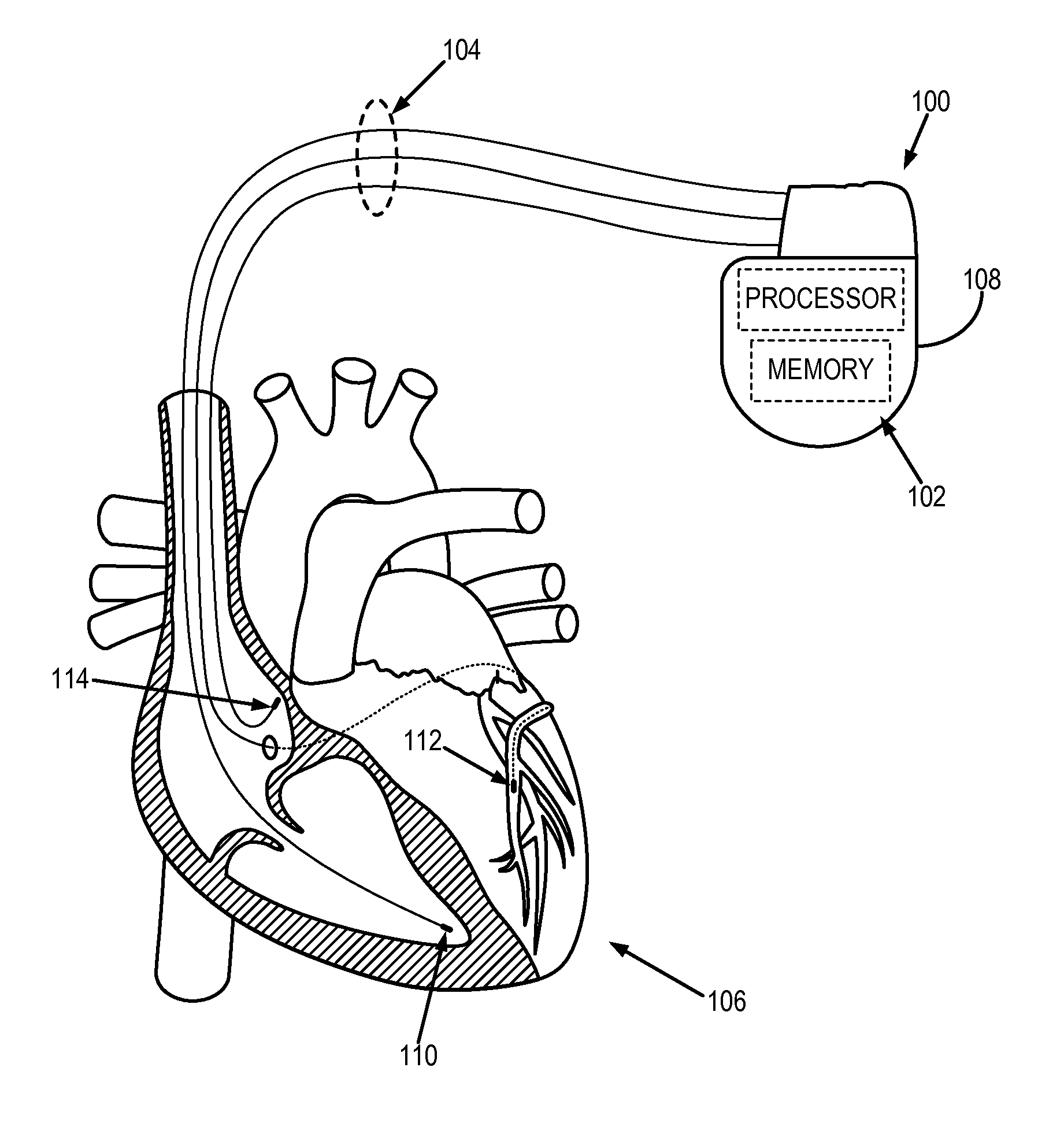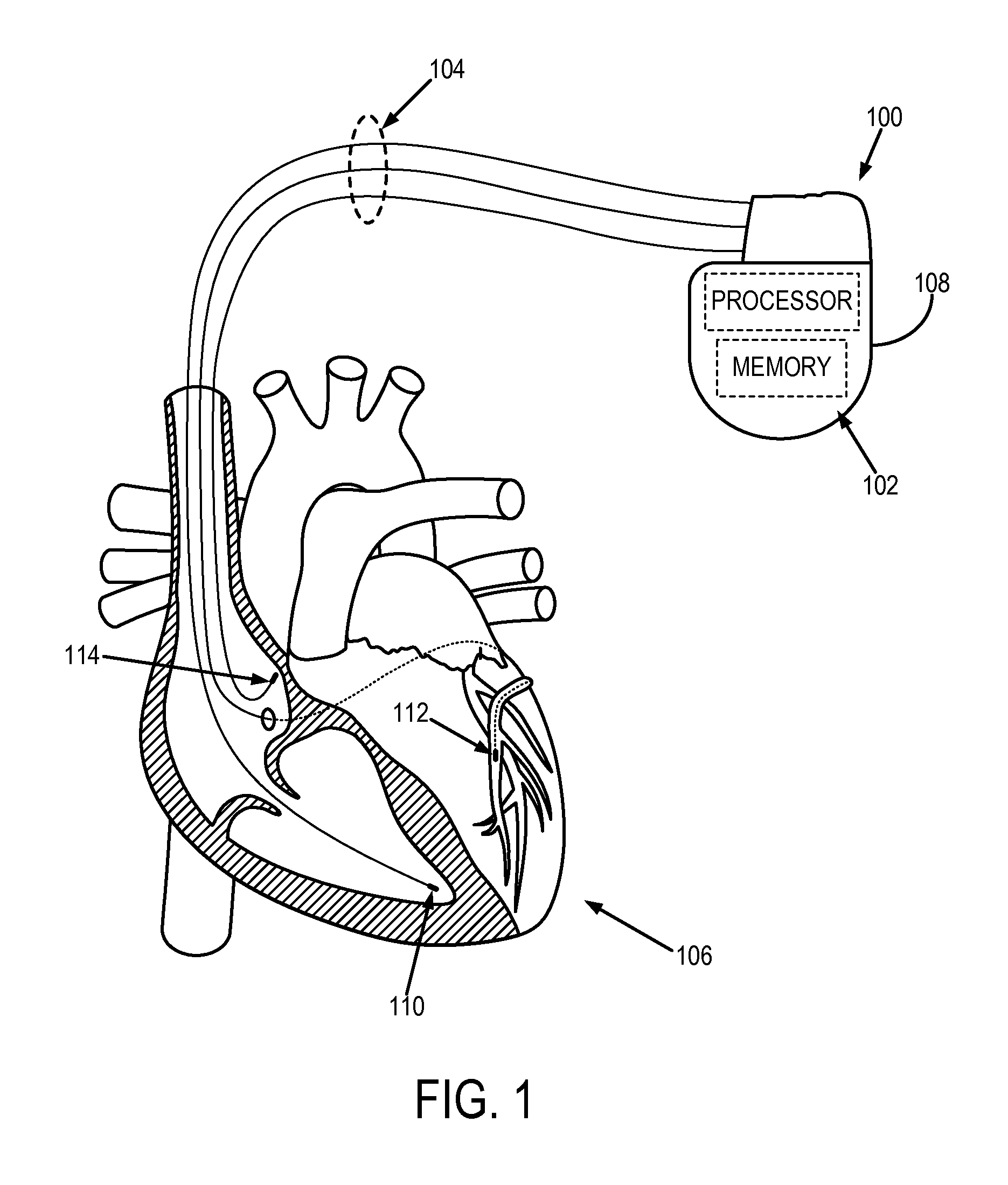System and method for automated adjustment of cardiac resynchronization therapy control parameters
a technology of control parameters and automatic adjustment, applied in the field of system and method for cardiac rhythm management, can solve the problems of reducing pump function, affecting the ventricular activation of patients, so as to achieve optimal ventricular activation, accurate adjustment of pacing control parameters, and accurate characterization
- Summary
- Abstract
- Description
- Claims
- Application Information
AI Technical Summary
Benefits of technology
Problems solved by technology
Method used
Image
Examples
Embodiment Construction
[0030]Conventional cardiac pacing with implanted cardiac rhythm management (“CRM”) devices, such as pacemakers and implantable cardioverter-defibrillators (“ICDs”) with pacing functionality, involves delivering electrical pacing pulses to a patient's heart via intracardiac electrodes that are in electrical contact with desired portions of the heart. The CRM device is usually implanted subcutaneously on the patient's chest.
[0031]Referring now to FIG. 1, an exemplary cardiac implantable electrical device (“CIED”) 100 utilized for cardiac resynchronization therapy (“CRT”) is illustrated. Such an exemplary CIED 100 includes an implantable pulse generator 102 that is in electrical communication with an intracardiac lead system 104.
[0032]Portions of the intracardiac lead system 104 may be inserted into the patient's heart 106 by way of the vessels of the upper venous system, such as the superior vena cava. The intracardiac lead system 104 includes one or more electrodes configured to prod...
PUM
 Login to View More
Login to View More Abstract
Description
Claims
Application Information
 Login to View More
Login to View More - R&D
- Intellectual Property
- Life Sciences
- Materials
- Tech Scout
- Unparalleled Data Quality
- Higher Quality Content
- 60% Fewer Hallucinations
Browse by: Latest US Patents, China's latest patents, Technical Efficacy Thesaurus, Application Domain, Technology Topic, Popular Technical Reports.
© 2025 PatSnap. All rights reserved.Legal|Privacy policy|Modern Slavery Act Transparency Statement|Sitemap|About US| Contact US: help@patsnap.com



